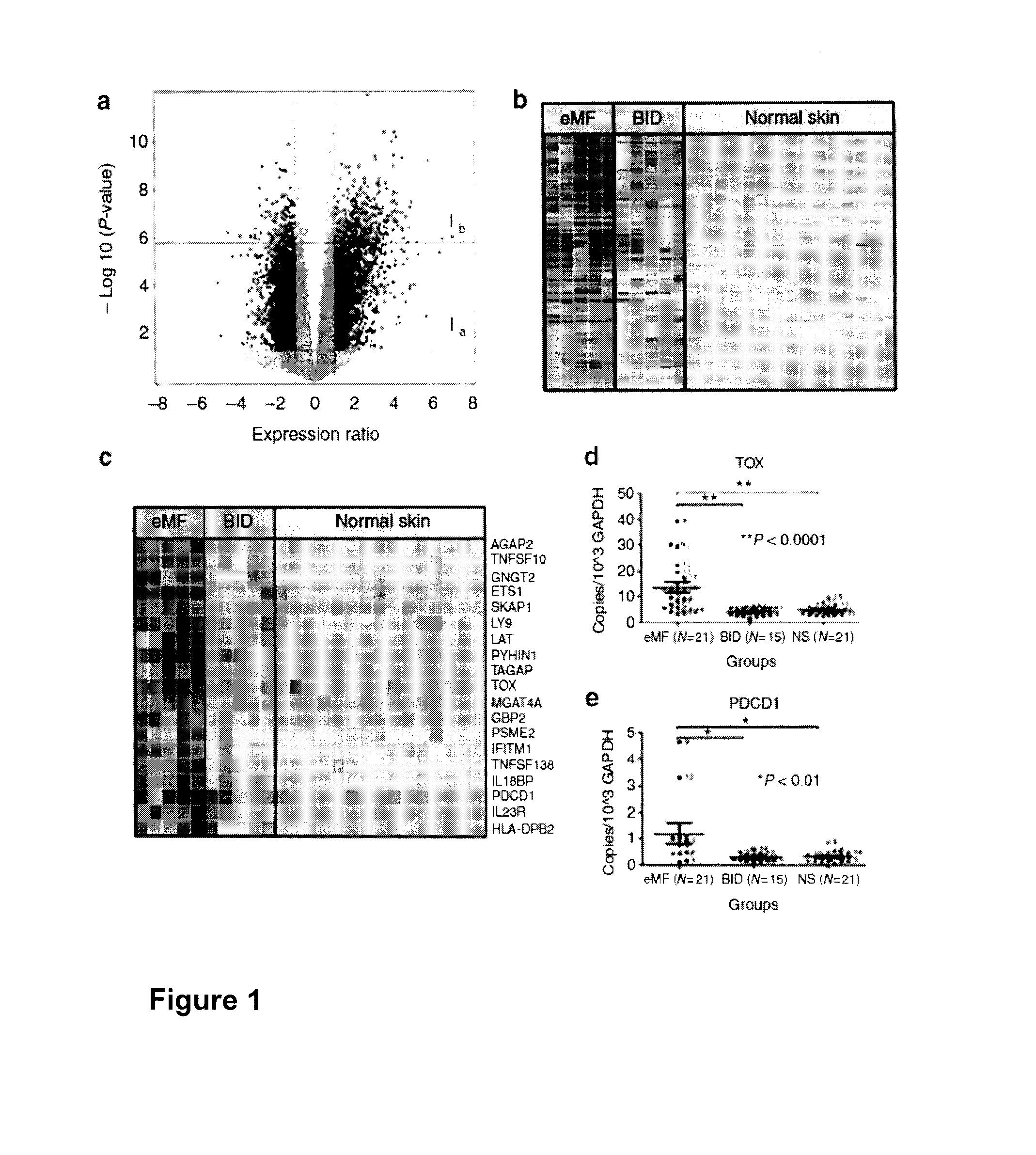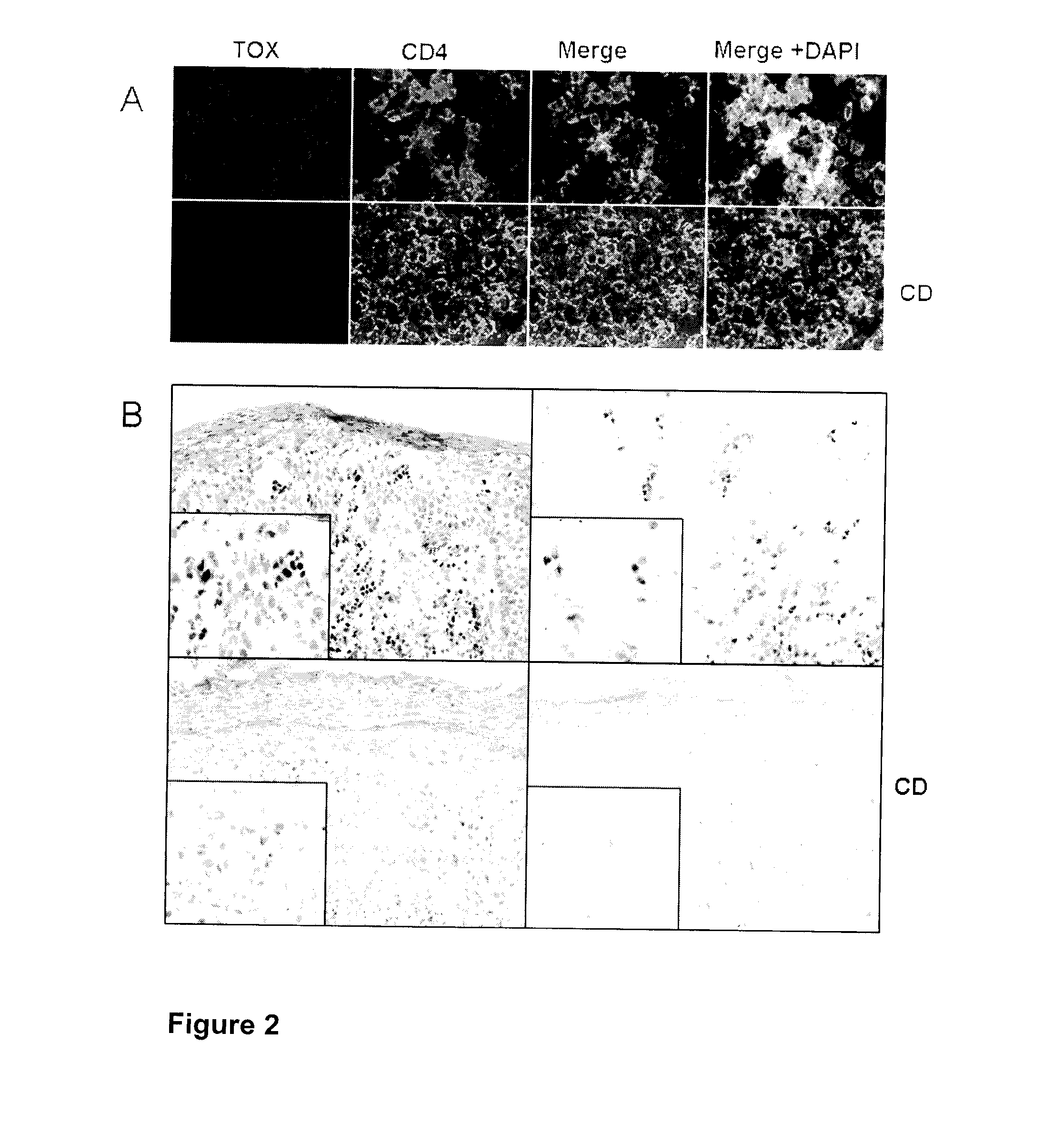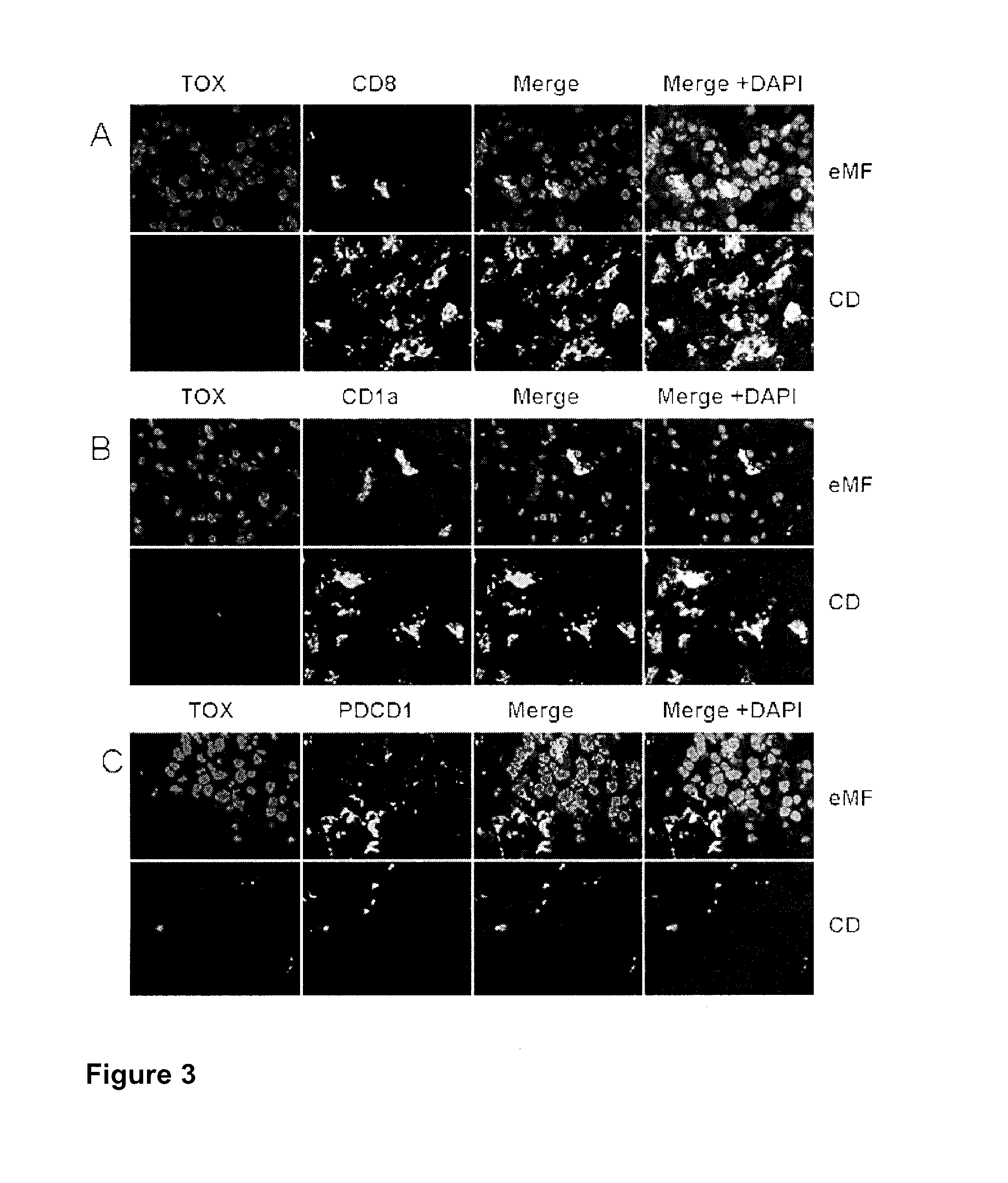Biomarkers for t cell malignancies and uses thereof
a technology biomarkers, which is applied in the field of biomarkers for t cell malignancies, can solve problems such as achieve the effect of hammering the diagnosis of more serious malignant diseases, particularly useful for diagnosing or detecting t cell malignancies
- Summary
- Abstract
- Description
- Claims
- Application Information
AI Technical Summary
Benefits of technology
Problems solved by technology
Method used
Image
Examples
example 1
Identification of Biomarkers for T Cell Malignancy
Materials and Methods
[0099]Skin Biopsies of eMF, BID and NS
[0100]Lesional skin biopsies were obtained using 3 mm punches under local anesthesia from 21 patients with eMF (patch and early plaque (Olsen, Vonderheid et al. 2007) recruited from the Skin Lymphoma Clinic of British Columbia Cancer Agency and the outpatient dermatology clinics of the Vancouver General Hospital (N=12) in the Department of Dermatology and Venerology, First Affiliated Hospital, Peking University, Beijing, China (N=9), with approval by the Clinical Ethics Board of both institutions, in accordance with the Declaration of Helsinki principles (Molecular Disease Markers, Approval Number C98-0493). Patients were diagnosed and staged based on clinical history, physical examination, histology findings and immunophenotypic characteristics according to previously described criteria (Olsen, Vonderheid et al. 2007). Patients were enrolled with stage IA-IB disease. Patient...
example 2
TOX as a Diagnostic and Prognostic Biomarker for T Cell Malignancy
[0120]TOX was further investigated as a biomarker for the diagnosis and prognosis of T Cell malignancy as set out below.
[0121]Levels of TOX mRNA in skin samples from subjects diagnosed with mycosis fungoides were compared to levels of TOX mRNA from subjects with benign inflammatory dermatoses or normal skin. As shown in FIG. 5, levels of TOX expression were observed to be significantly higher in subjects with mycosis fungoides compared to subject with benign inflammatory dermatoses or normal skin.
[0122]Subjects with mycosis fungoides were then classified according to disease stage. The levels of TOX in samples from subjects with stage I, stage II, stage III or stage IV mycosis fungoides were compared along with biopsy samples from subjects with benign inflammatory dermatoses, chronic dermatitis, pityriasis rubra pilaris, or normal skin. As shown in FIG. 6, the expression of TOX increases with disease progression from ...
PUM
 Login to View More
Login to View More Abstract
Description
Claims
Application Information
 Login to View More
Login to View More - R&D
- Intellectual Property
- Life Sciences
- Materials
- Tech Scout
- Unparalleled Data Quality
- Higher Quality Content
- 60% Fewer Hallucinations
Browse by: Latest US Patents, China's latest patents, Technical Efficacy Thesaurus, Application Domain, Technology Topic, Popular Technical Reports.
© 2025 PatSnap. All rights reserved.Legal|Privacy policy|Modern Slavery Act Transparency Statement|Sitemap|About US| Contact US: help@patsnap.com



